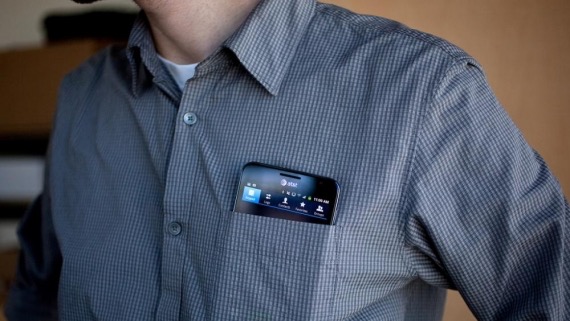A new study recommends that people with cardiac devices such as pacemakers and implantable cardioverter defibrillators should be wary of smartphones, stating that close proximity to the phones can potentially disrupt functioning or cause painful shocks.
Currently, manufacturers of cardiac devices and some regulatory organisations, such as the US Food and Drug Administration (FDA) recommend that mobile phones should be kept 15-20cm away from the device. However this is based on research that was carried out 10 years ago.
Since then, smartphones have been introduced, as have newer cardiac devices, so German researchers decided to assess this advice.
They found that people should maintain this 15-20cm distance as smartphones can cause pauses in function or even unwanted painful shocks if kept too close to certain devices.
“Pacemakers can mistakenly detect electromagnetic interference (EMI) from smartphones as a cardiac signal, causing them to briefly stop working. This leads to a pause in the cardiac rhythm of the pacing dependent patient and may result in syncope (fainting).
“For implantable cardioverter defibrillators (ICDs) the external signal mimics a life threatening ventricular tachyarrhythmia (abnormally high heart rate), leading the ICD to deliver a painful shock,” explained Dr Carsten Lennerz of the German Heart Centre in Munich.
The study involved 308 patients, including 147 with pacemakers, who were exposed to the electromagnetic fields of three well-known smartphones – the Samsung Galaxy 3, the Nokia Lumia and the HTC One XL.
The phones were placed on the skin directly over the cardiac device and electrocardiograms (ECGs) were used to check for interference with the devices.
The researchers noted that from early studies, it is already known that ‘the most vulnerable phases of a call are ringing and connecting to the network, not talking’.
The study found that while interference between smartphones and these devices is ‘uncommon’, it can still occur, ‘so the current recommendations on keeping a safe distance should be upheld’.
“Nearly everyone uses smartphones and there is the possibility of interference with a cardiac device if you come too close. Patients with a cardiac device can use a smartphone but they should not place it directly over the device. That means not storing it in a pocket above the device. They should also hold their smartphone to the ear opposite to the side of the device implant,” commented Prof Christof Kolb, also of the German Heart Centre.
Details of these findings were presented at the joint meeting of the European Heart Rhythm Association (EHRA) of the European Society of Cardiology (ESC) and Cardiostim in Milan, Italy.
Agencies/Canadajournal
 Canada Journal – News of the World Articles and videos to bring you the biggest Canadian news stories from across the country every day
Canada Journal – News of the World Articles and videos to bring you the biggest Canadian news stories from across the country every day



